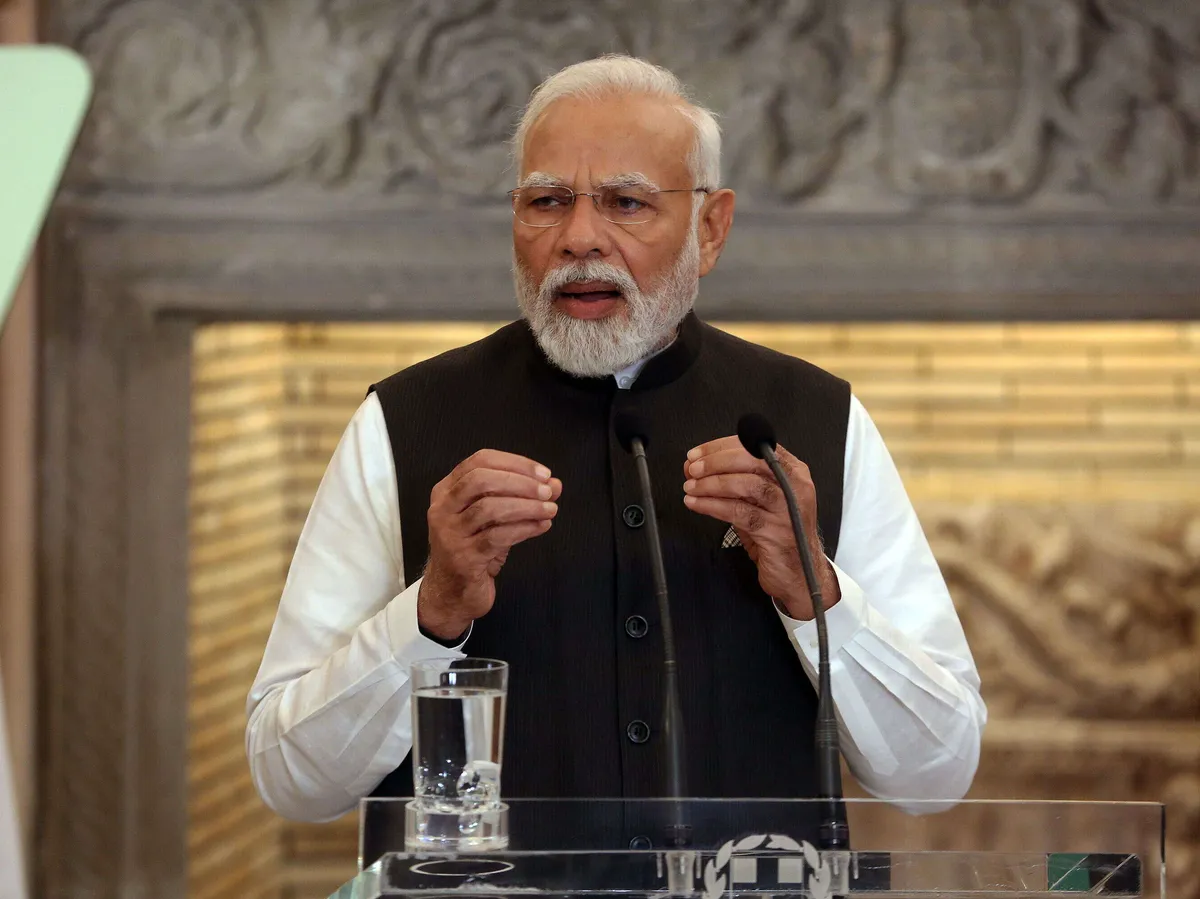Economic growth and China’s problems are weighing on incumbent Prime Minister Narendra Modi in India’s general elections.
The most famous political slogan in India is probably in Hindi good days are comingloosely translated as “good days are coming”.
It was originally created in 2014 by the then prime ministerial candidate of the Bharatiya Janata Party Narendra Modi with the intention of asserting that India has a prosperous future ahead of it if the BJP comes to power.
In retrospect, the slogan was seen as crucial to the BJP’s victory.
The phrase is still being worked on, and it seems to be working. All signs point to India’s parliamentary elections, which begin today, Friday, being won by the 40-party NDA coalition that has been in power for ten years and is led by Prime Minister Modi, who represents the BJP party.
The BJP’s popularity is boosted by the country’s growing economy and populist and Hindu nationalist rhetoric. About 80 percent of India’s population is Hindu.
India has benefited from the geopolitical situation in which US relations with China have tightened. According to some estimates, India may overtake China as the biggest driver of global growth by the end of this decade.
Electronically.
Outside a polling station in Delhi, there is a statue instructing how to use an electronic voting machine.
PHOTO: Pia Heikkilä
What companies lead, investors follow
The corporate world now believes in India. Among other things, a technology company Appleknown for airplanes Boeing and a semiconductor company Micron have moved their production to India to reduce their China risks.
India’s growth forecast for the next few years is around 6.5 percent. China’s growth is believed to be below five percent.
In the past, economic growth was not really reflected in business or consumer confidence. Optimism is now visible in the country’s business field and stock market. This year, for the first time, the Indian stock market overtook the Hong Kong stock market in terms of trading volume.
Investors see Modi’s re-election as the best option for India’s growth story. The country is believed to attract more money from abroad.
Modi’s government has followed a frugal fiscal policy, and this will continue in the next term as well. The deficit of the public finances has been reduced by severely cutting spending. The government’s economic reforms include an extensive tax reform.
Now let’s think about what improvements can be expected during the next government term. The greatest need is in reforms of the land law and the labor market. Unemployment figures, especially among young people, are ugly.
There is hardly any opposition from the weak opposition
India will become the world’s third largest economy by 2030, even by the most conservative estimates.
Modi, 73, has made the most of the growth story. He has promised to make India a developed economy by 2047.
An opposition coalition consisting of an alliance of 20 parties, led by a representative of the Gandhi dynasty Rahul Gandhi, has suffered from a lack of a unified strategy and a lack of money.
Gandhi has promised support for the poor and lower castes and the eradication of good brother networks. The opposition has also loudly criticized the parties’ election funding.
Both sides accuse each other of bribery.
According to political scientists, the biggest question in the election is not whether Modi will win, but how many years he wants to stay in power.
Long elections.
Voting takes place around the country at different times.
PHOTO: Pia Heikkilä
Fact
Electronic voting
India has been using voting machines since 2000.
There are 1.2 million devices at the polling stations. 15 million officials have been hired to supervise them.
The device can record more than 2,000 sounds at once.
The voter presses the blue button with the candidate’s number and symbol.
The device works on batteries and is not connected to the power grid or the Internet.
